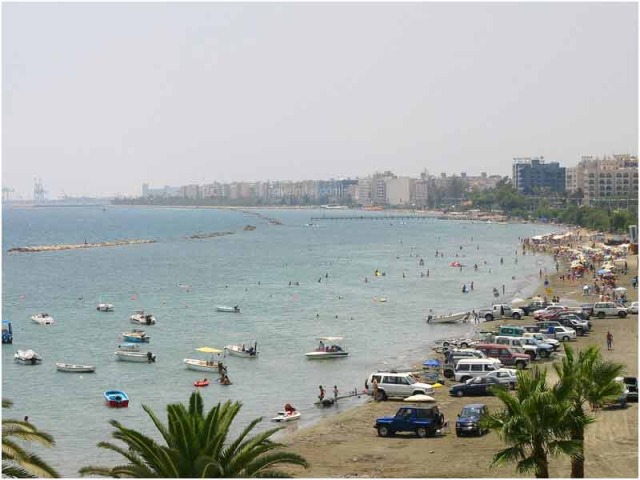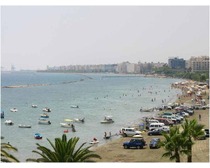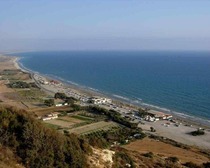Cyprus is an island country in Mediterranean Sea and houses many tourist attractions. Check out the places to see and things to do in Cyprus.
Cyprus Attractions
Location: Mediterranean Sea

Languages: Greek, Turkish
Best Time to Visit: May to October
Time Zone: GMT+2/ +3
Driving Side: Left Side
Main Attractions: Tomb of the Kings, Medieval Walls of Lefkosia, Archbishop Palace, Marine Life Museum, The Museum of Archeology and Natural Sciences
Cyprus is a Eurasian island-country located in the Mediterranean Sea. It is the third largest island in the Mediterranean region & is a thriving tourist destination. The country was earlier a British colony, which gained independence in 1960. Following this, Cyprus became a Commonwealth republic in 1961. In effect, the Republic of Cyrus is an independent and developed country, which joined European Union in 2004 and subsequently adopted Euro as its currency. The country is blessed with unbound natural beauty and historic wealth. Therefore, the tourists have plenty of tourist attractions to visit. To know more on places to see and things to do in Cyprus, read the lines below.
Sightseeing
Cyrus houses some enthralling and exhilarating sites to see. The Tomb of the Kings is situated on the north western necropolis of Pafos. These are rock cut monuments, dating back to the Hellenistic and early Roman periods. They resemble the tombs found in Alexandria, demonstrating close association between the two cities during the Hellenistic period. This is a UNESCO World Heritage Site and should not be missed.
Situated in Lefkosia region, the Medieval Walls of Lefkosia are historic structures. The walls are positioned in a circle, fortified by eleven heart-shaped bastions and protected by an 80 meters wide moat. Initially made of mud-brick, with the lower part by stone, they were later repaired and covered entirely with stones. Next is the Archbishop Palace, built in 18th century. It houses the offices of the Archdiocese and the residence of the Archbishop.
Museums
Cyprus houses a number of museums. The major ones include Marine Life Museum, located in Agia Napa's Town Hall. It is the first natural and unique museum in Cyprus, exhibiting past and present marine life as well as promoting research and study. The Museum of Archeology and Natural Sciences exhibits artifacts dating from the early Stone Age. St Mamas Church and Icon Museum, built in the late eighteenth century, is the most beautiful and the best maintained Orthodox church-museum.
The Shipwreck Museum displays photographs of the recovery expedition and the reconstruction of the original ships. The Decorative Arts Museum showcases a collection of paintings, embroideries and porcelain. The Archeological Museum of Nicosia should not be missed by the visitors. Built in 1908, it presents exhibits from the Neolithic period belonging to 7500-3900 B.C., predominantly stone implements from Choirokoitia.
Beaches
Cyprus offers host of pristine beaches to indulge in leisure activities. The beaches in Kyrenia and Lefke provide ample opportunity to the adventure lovers to enjoy water sports such as water skiing, parascending, wind-surfing, diving and jet skiing. Famaqusta is known for its long sandy stretches, ideal for leisure strolls. The coast of Aqia Napa is considered to be the best with regard to silvery beaches. It attracts the majority of tourists with special facilities such as scuba diving, parachutes, water scooters, canoes and paddles. The beaches in Larnaca are ideal for those looking for tranquility. Protara beaches, on the other hand, are dotted with high quality hotels, offering thriving activities.


More from iloveindia.com
- Home Remedies | Ayurveda | Vastu | Yoga | Feng Shui | Tattoos | Fitness | Garden | Nutrition | Parenting | Bikes | Cars | Baby Care | Indian Weddings | Festivals | Party ideas | Horoscope 2015 | Pets | Finance | Figures of Speech | Hotels in India : Delhi | Hyderabad | Chennai | Mumbai | Kolkata | Bangalore | Ahmedabad | Jaipur
- Contact Us Careers Disclaimer Privacy Policy Advertise With Us Lifestyle Sitemap Copyright iloveindia.com. All Rights Reserved.







